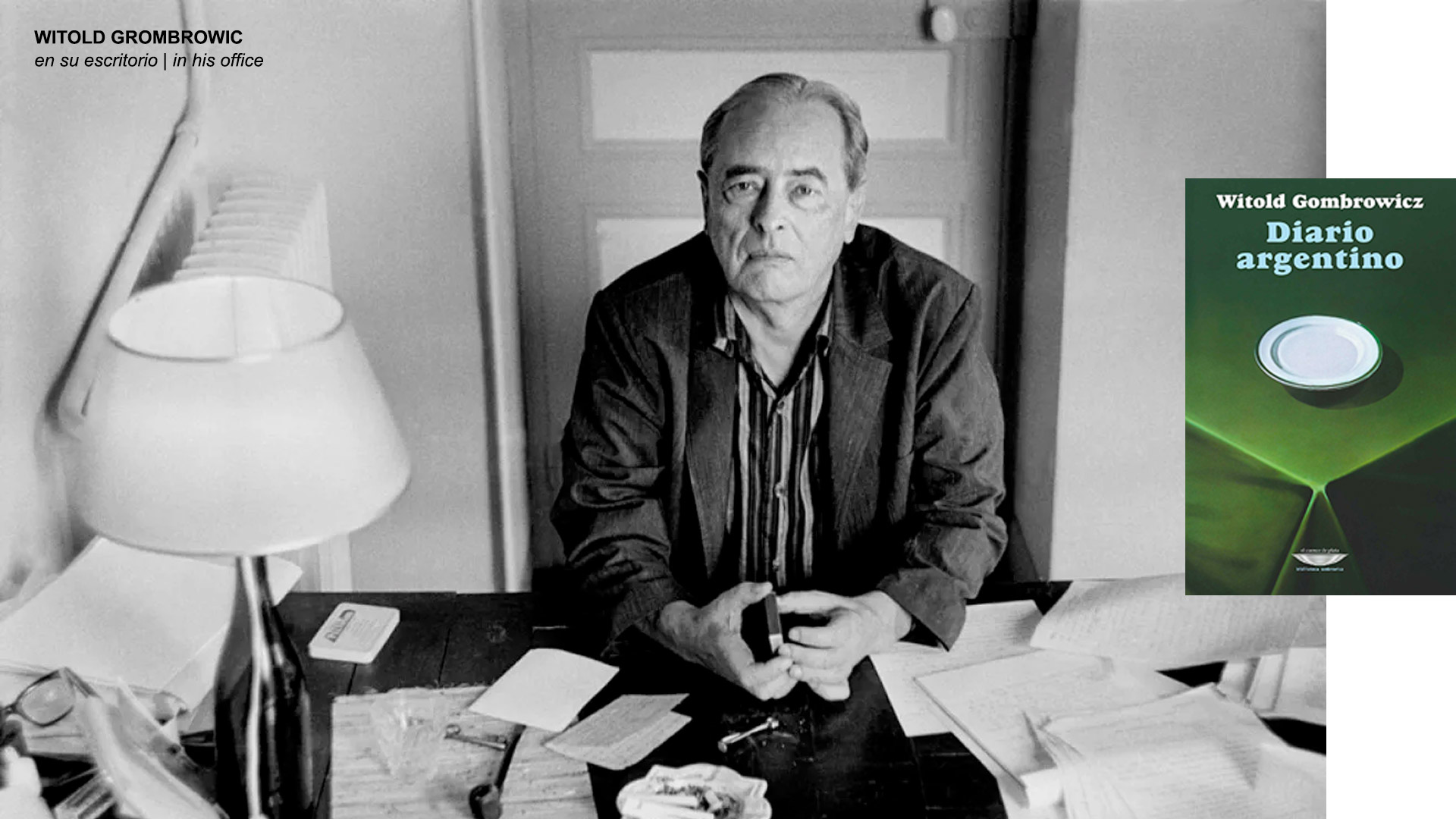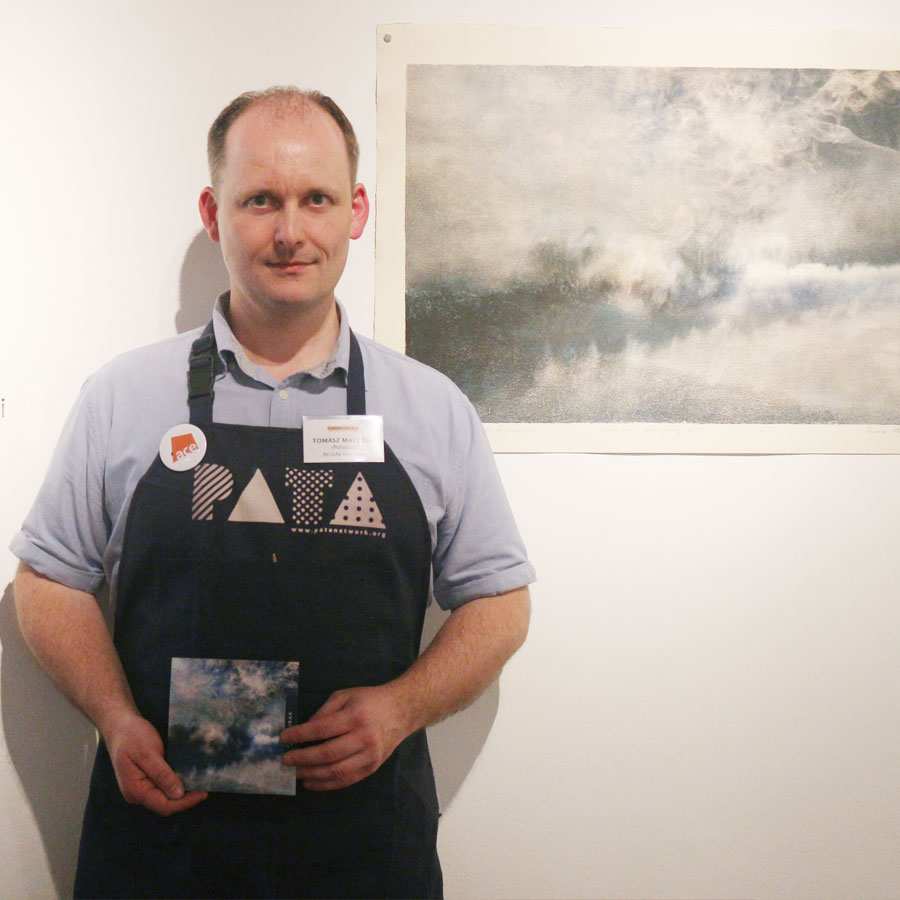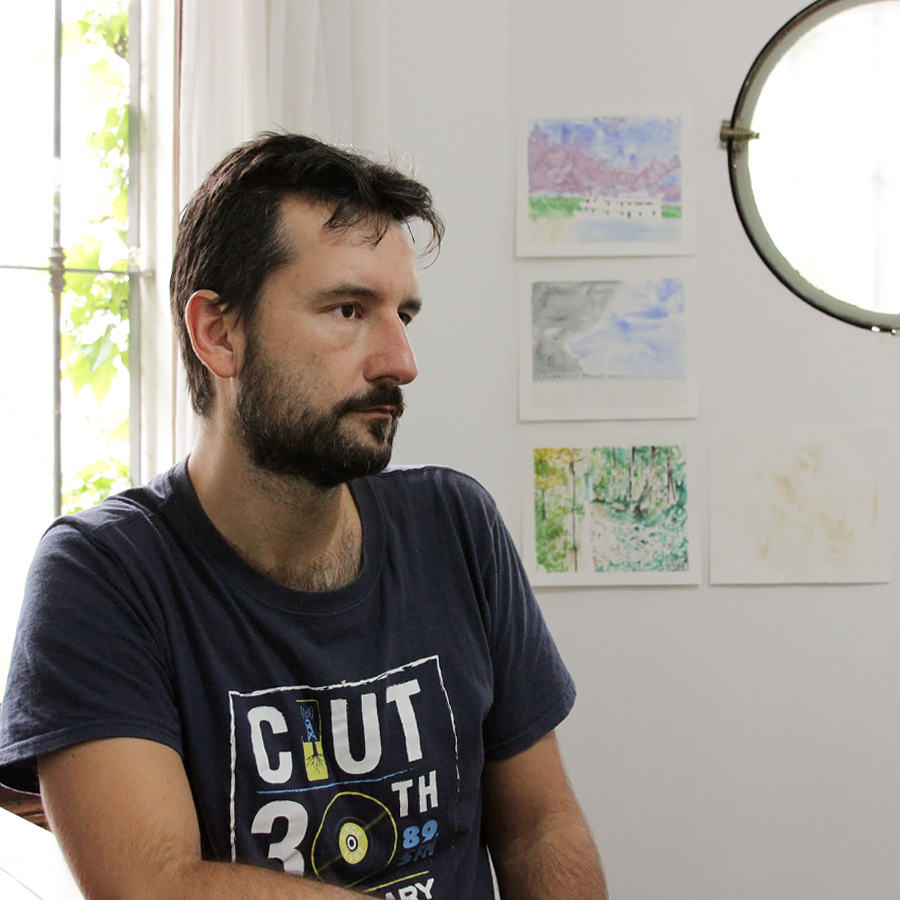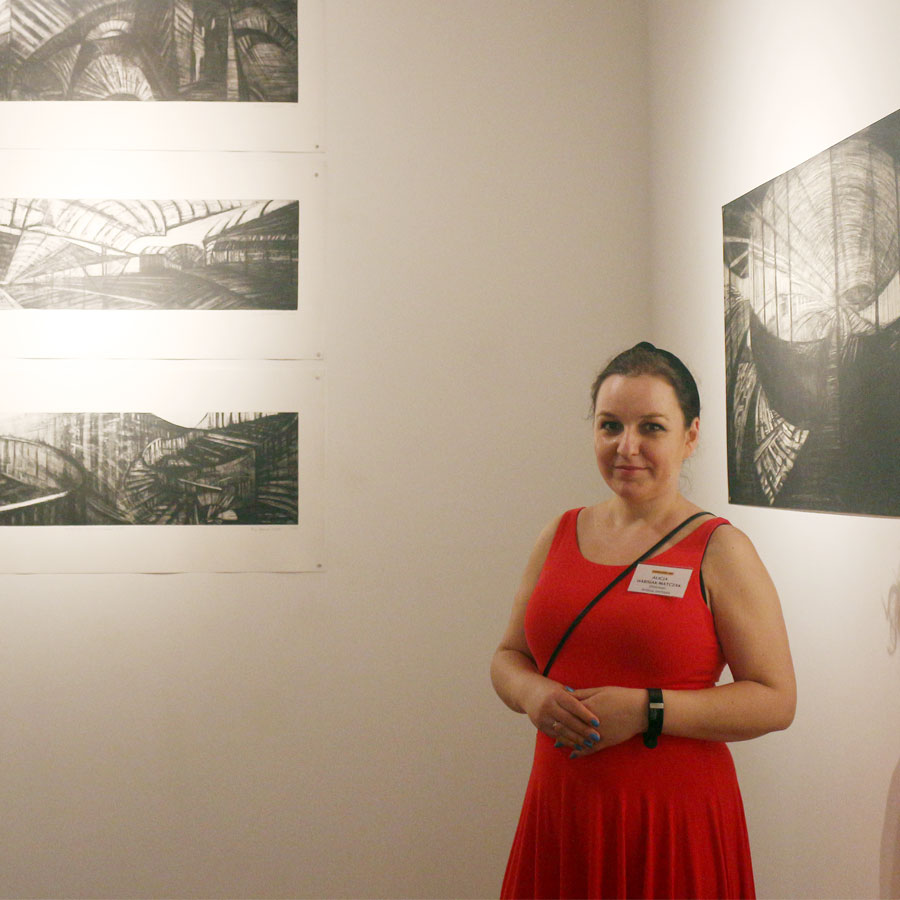Activities
Exhibitions
My Personal Cloud
Alicja Panasiweicz
14.05.25 04.06.25
As a closure to the residency project that Alicja Panasiweicz came to produce in the ´ace studio in collaboration with Adam Panasiewicz, the collective duo presented an installation comprised of multiple elements in the Políglota Room.
During her residency, Alicja developed an artistic project inspired by the life and work of the Polish émigré writer Witold Gombrowicz, who arrived in Buenos Aires in 1939 and unexpectedly found himself in exile. His confrontation with a foreign reality, shaped by imagination and cultural displacement, became a starting point for Alicja’s own autoethnographic explorations. This encounter with the unknown — imagined yet real — opened a rich space for artistic reflection and creation. In her project, titled My Personal Cloud, the artist explored the idea of presence and place through olfactory compositions. By blending scents associated with her own identity and environment with those discovered locally in Buenos Aires, she created scented wax forms that, once burned, released multisensory experiences.
The work playfully investigated collision, merging, and immersion into a new context, offering a poetic metaphor for cultural dialogue and sensory memory.

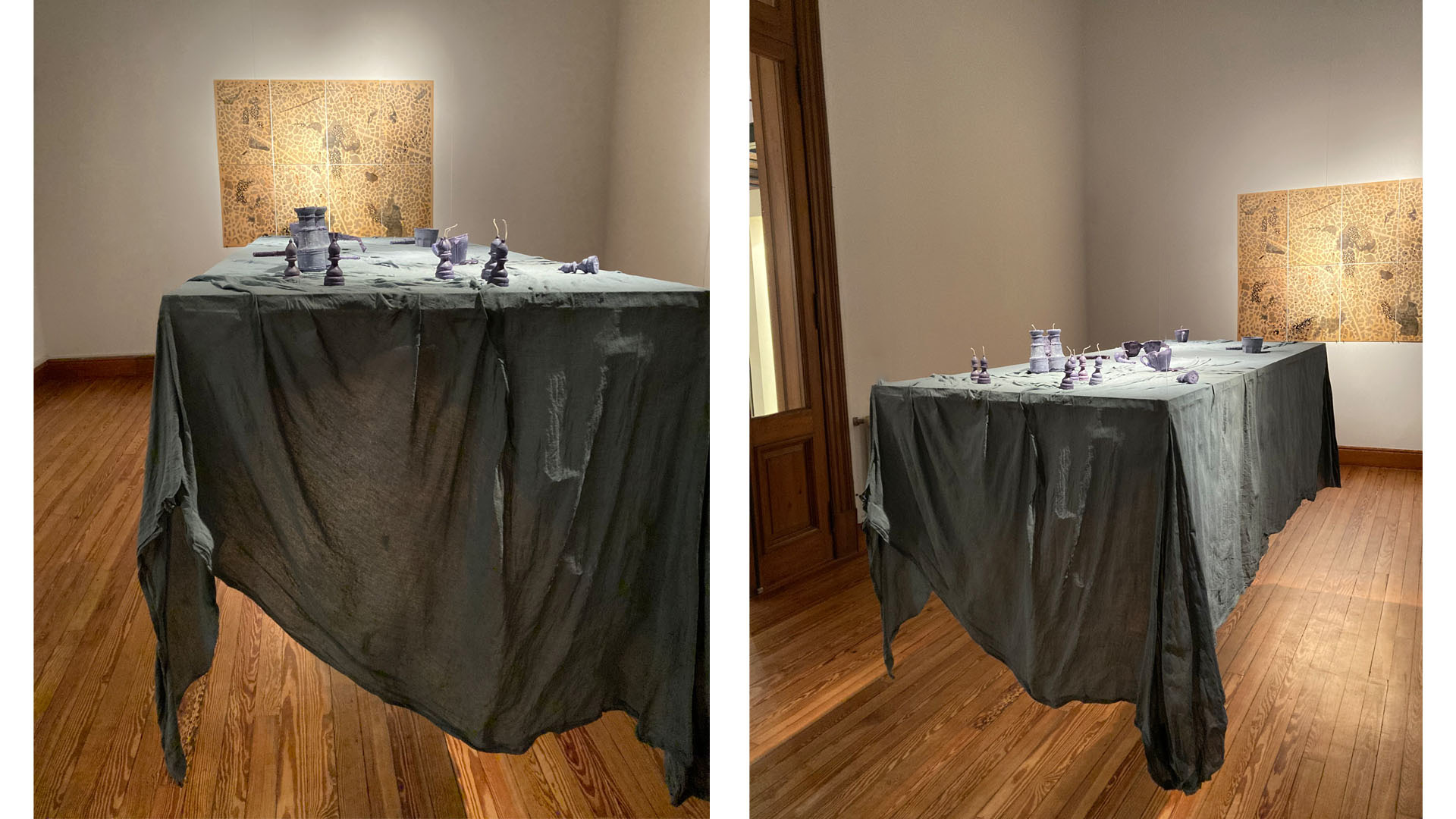
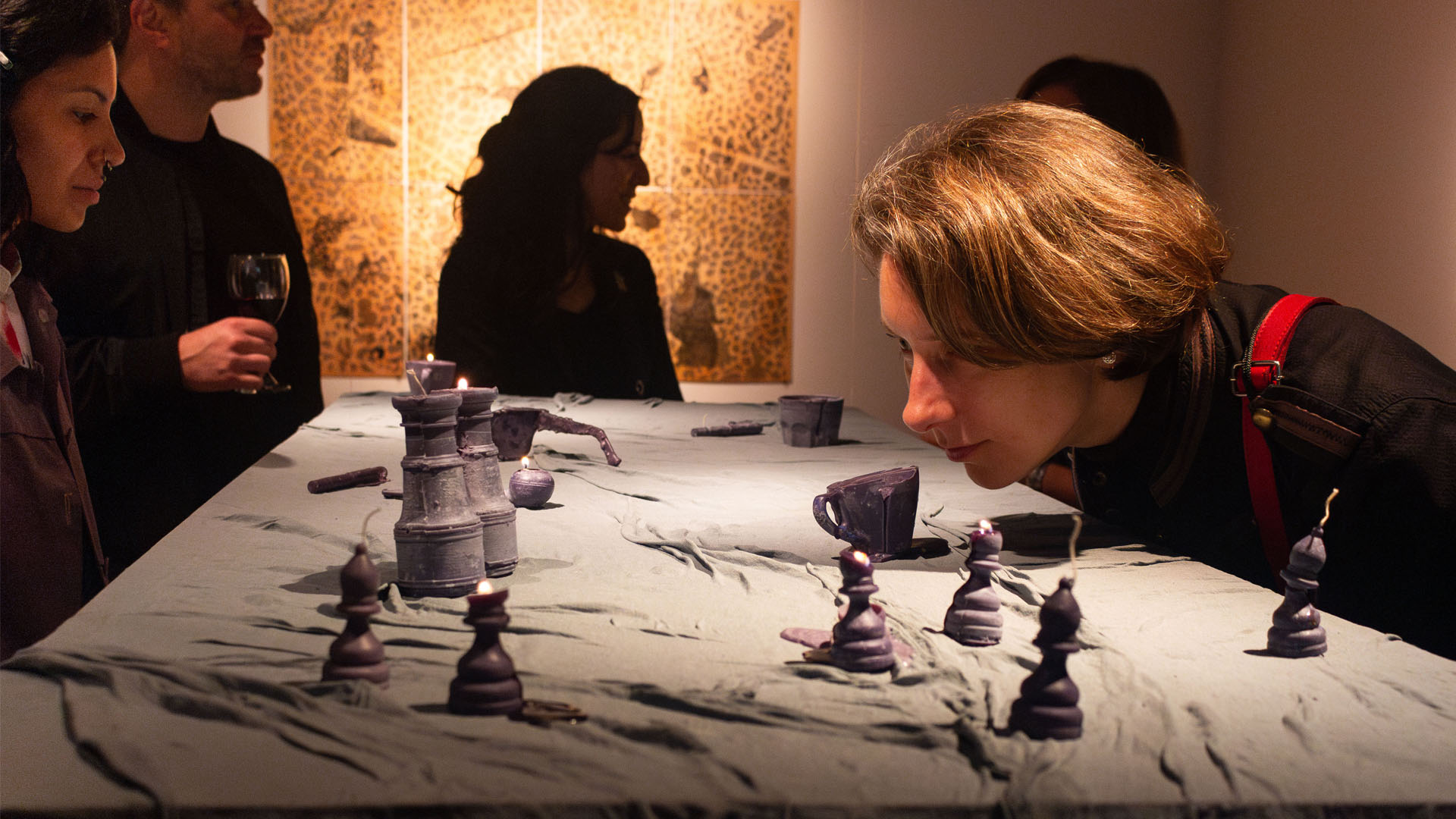

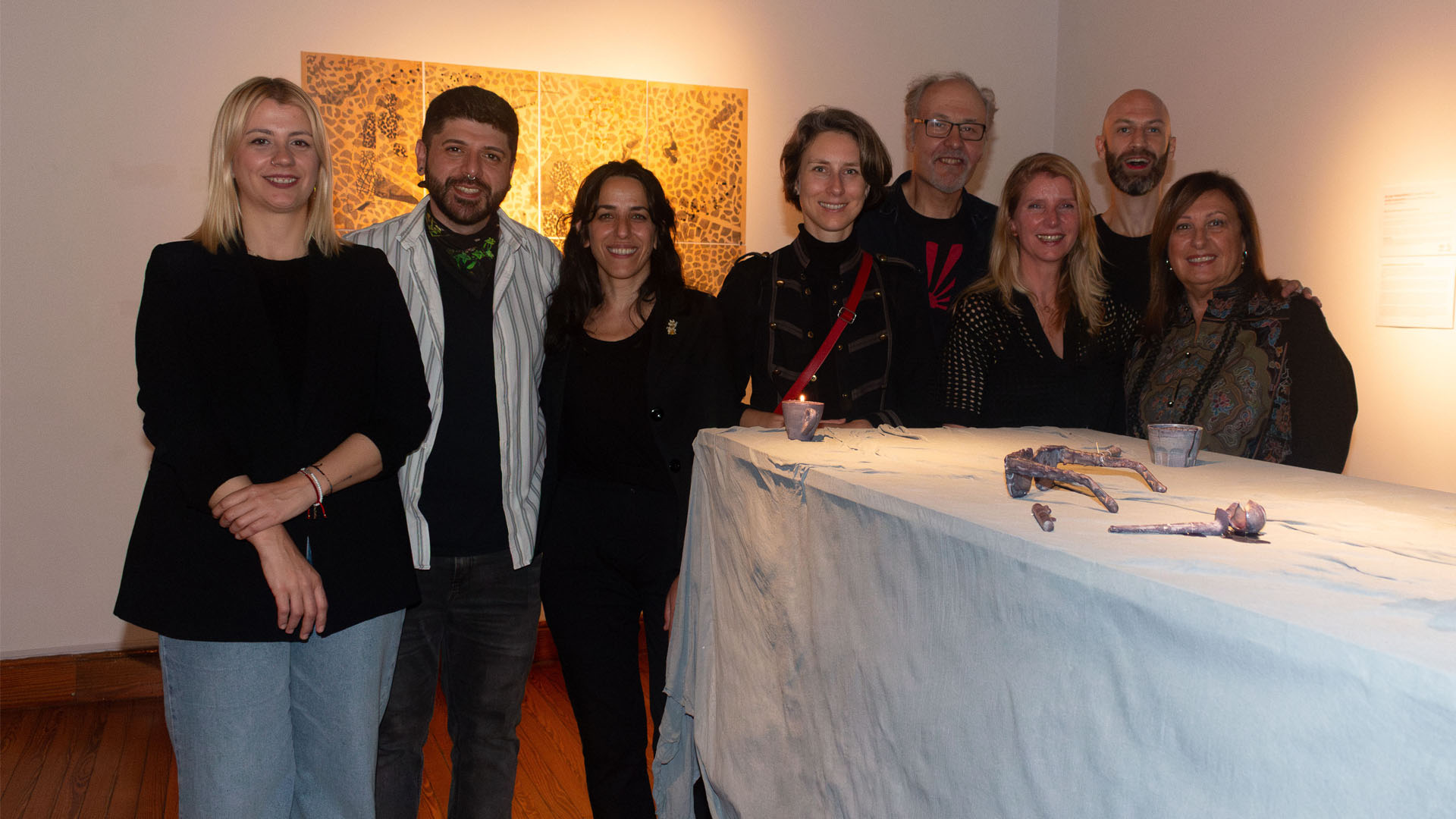
Curatorial text
Alicia Candiani
The Poetics of Estrangement
14.05.25
A Subjective Cloud: Alicja Panasiewicz and the Poetics of Estrangement
For nearly twenty-four years, Polish writer Witold Gombrowicz lived in Argentina as a foreigner. His sharp and decentered gaze became a lens through which local cultural structures were strained and illuminated. With irony and clarity, he shed light on the most ambiguous zones of national identity. Like other travelers before him—those 19th-century European artists who crossed the Atlantic to portray the exoticism of the “New World”—Gombrowicz recorded the otherness of the landscape, architecture, social customs, and even the climate. Yet he did so from a radically different standpoint: not as an enlightened tourist, but as an implicated subject, displaced and affected by a foreignness that would soon become existential.
It is from this very gesture—somewhere between meticulous observation and poetic transformation—that Alicja Panasiewicz builds My Personal Cloud. Inspired by Gombrowicz’s arrival in Buenos Aires in 1939, just days before the outbreak of World War II, the Polish artist reactivates this experience of estrangement and translates it into a visual, olfactory, and spatial investigation. Rather than illustrating a narrative, her work engages with a way of inhabiting and perceiving the world from a position of displacement—from the subjective cloud each of us carries. This tension between self and environment gives rise, metaphorically, to something akin to a “subjective cloud”: a perceptual field shaped by the biographical, the affective, and the sensorial.
In this project, Panasiewicz uses sensitive materials: altered cartographies, autobiographical records, and scented wax candles (notably evoking the aromas of yerba mate and smoke). The candles are sculptural casts of everyday objects that appear in photographs of Gombrowicz’s desk: pencils, inkwells, eyeglasses, chess pieces, a spyglass… utensils of an intimacy suspended in time. Once lit, the candles activate an affective and ephemeral dimension. They evoke not only the fragility of memory but also the slow dissolution of a ghostly presence that consumes itself while shedding light. The installation is accompanied by a video based on a 3D scan of a model of that same desk. A digital glitch that occurred during the scanning process was deliberately retained, further heightening the surreal atmosphere of spatial disorientation and the uncanny relationships among the objects, which seem to possess a life of their own.
From an autoethnographic perspective—in which the artist-researcher becomes both subject and object of study—Panasiewicz interweaves literary, cultural, and identity-based layers in a language that challenges traditional boundaries of the visual arts. Like Gombrowicz in Trans-Atlantyk or Argentine Diary, her gesture is not to explain a culture, but to inhabit the discomfort of the unresolved, the contradictory, the shifting. My Personal Cloud thus unfolds as a contemporary drift of the foreigner’s journey—not to represent the world from a superior gaze, but to share—with all its folds and fractures—the experience of perceiving from another place. A gesture that is both deeply poetic and political.
Witold Gombrowicz (1904-1969)
was a Polish novelist and playwright, nominated for the Nobel Prize in Literature on four consecutive occasions. He lived in Argentina for 24 years, a country he regarded as his second homeland. In Buenos Aires, although he lived in relative poverty and maintained an ambivalent relationship with the Polish exile community, he also found an existential and literary laboratory from which he wrote much of his celebrated Diary and developed his critical thinking on Europe, Poland, and the human condition.
